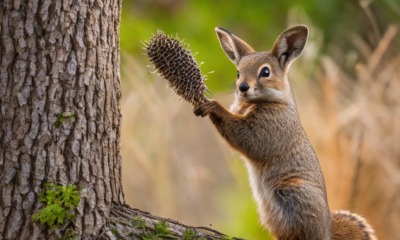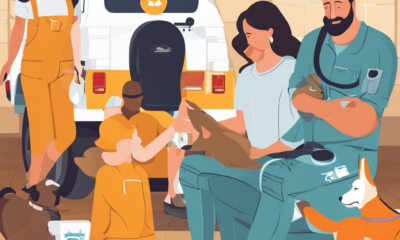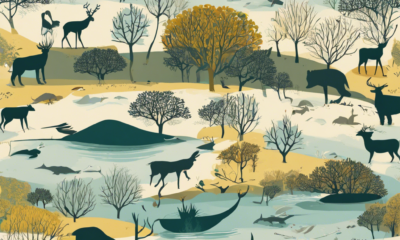Wildlife
Protecting Endangered Species: What You Can Do

Endangered species are those that face a high risk of extinction in the wild, and their survival hangs in the balance. The loss of even a single species can have cascading effects on ecosystems, disrupting the delicate balance of nature. The plight of these creatures is largely due to human activities, and it’s high time we take responsibility and step up our conservation efforts. So, what can we do to protect these vulnerable creatures and ensure their survival for future generations?
One of the most crucial steps in conserving endangered species is raising public awareness. Many people are unaware of the critical state of these species and the factors contributing to their decline. Education plays a vital role here. Schools, universities, and environmental organizations can organize workshops, lectures, and campaigns to inform the public about the importance of biodiversity and the consequences of species extinction. By spreading knowledge, we can foster a sense of urgency and inspire individuals to take action.
Another effective approach is supporting conservation organizations and initiatives. Numerous NGOs and wildlife conservation groups work tirelessly to protect endangered species and their habitats. Donations, volunteering, and advocating for these organizations can make a significant impact. Resources are often limited, and every contribution, no matter how small, can help fund research, habitat restoration, and anti-poaching efforts.
As individuals, we can also adopt sustainable habits to reduce our environmental footprint. Simple actions like reducing energy consumption, minimizing waste, and using eco-friendly products can contribute to the preservation of ecosystems. For example, choosing sustainably sourced seafood helps prevent the decline of marine species, and avoiding single-use plastics can reduce the harm caused to marine life.
Travelers and tourists can also make a difference by supporting ecotourism. Ecotourism focuses on responsible travel to natural areas, ensuring that local communities and the environment benefit. By choosing eco-friendly tours and accommodations, travelers can contribute to the protection of wildlife and their habitats while enjoying memorable experiences.
In addition, advocating for stronger environmental policies and urging governments to prioritize conservation is crucial. Writing to local representatives, participating in petitions, and voting for politicians who prioritize environmental protection can drive meaningful change. Policy changes can lead to stricter regulations on activities that harm endangered species, such as deforestation, illegal wildlife trade, and pollution.
Lastly, getting involved in citizen science projects allows individuals to contribute directly to scientific research and monitoring. These projects often involve activities like birdwatching, plant identification, or wildlife surveys, providing valuable data to researchers and conservationists.
Protecting endangered species requires collective effort and dedication. By raising awareness, supporting conservation initiatives, adopting sustainable practices, and advocating for environmental policies, we can make a positive impact on the survival of these precious creatures and the health of our ecosystems. Let’s come together to ensure a brighter future for both wildlife and humanity.

-

 Training12 months ago
Training12 months agoInquiry Regarding Document Review
-

 Adoption1 year ago
Adoption1 year agoHow to Help a Rescue Pet Adjust to Their New Home
-

 Wildlife1 year ago
Wildlife1 year agoEncouraging Wildlife in Your Backyard Safely
-

 Adoption1 year ago
Adoption1 year agoFinding the Right Rescue Organization for Your Family
-

 Wildlife1 year ago
Wildlife1 year agoHow Climate Change Affects Wildlife Ecosystems
-

 Wildlife1 year ago
Wildlife1 year agoThe Role of Sanctuaries in Wildlife Protection
-

 Training12 months ago
Training12 months agoApple Smartphones in 2024: Revolutionary Features and Why They Dominate the Market
-

 Training1 year ago
Training1 year agoHow to Train Your Puppy: A Step-by-Step Guide















